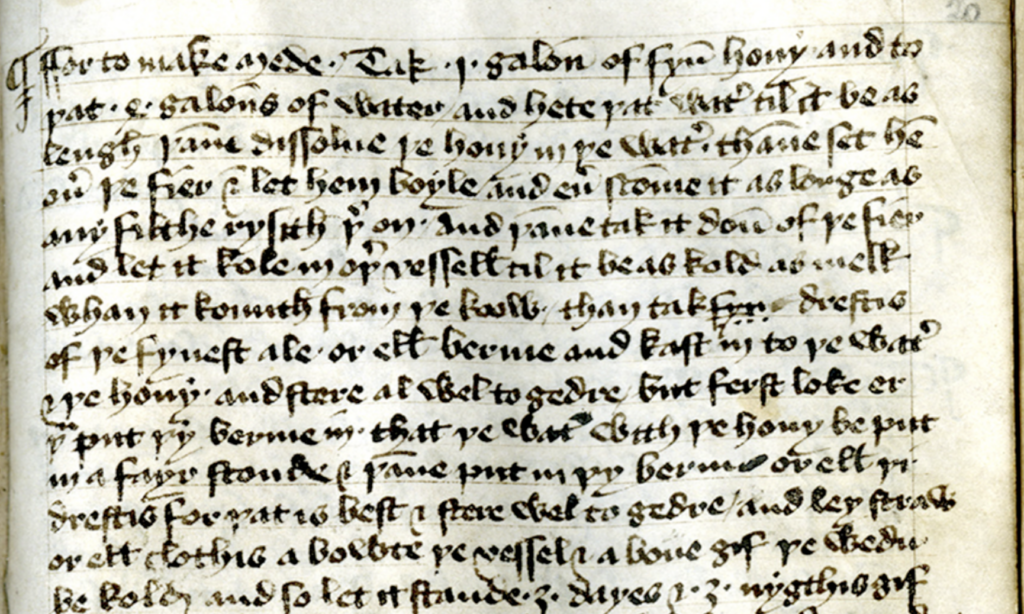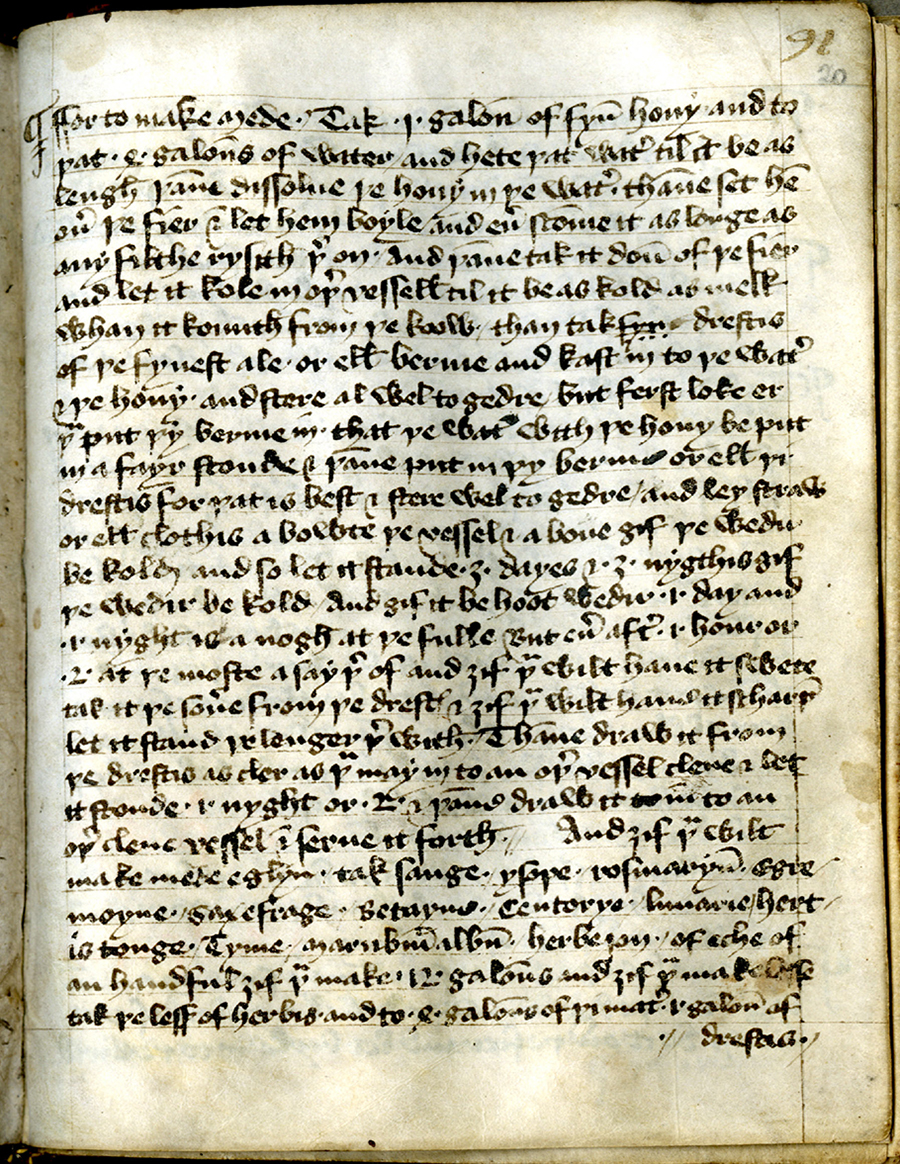How to Make Medieval Mead: A 13th Century Recipe


Read a story set in the Middle Ages, Beowulf or anything more recently written, and you’re likely to run across a reference to mead, which seems often to have been imbibed heartily in halls dedicated to that very activity. The same goes for medieval-themed plays, movies, and even video games. Take Assassin’s Creed Valhalla, described by Max Miller, host of Youtube channel Tasting History, as “a history-based game of, like, my favorite time period — Saxons and Vikings, you know, fightin’ it out — so I’m assuming that there’s going to be mead in there somewhere.” He uploaded the video, below, in the fall of 2020, just before that game’s release, but according to the Assassin’s Creed Wiki, he was right: there is, indeed, mead in there.
Perhaps throwing back a digital horn of mead in a video game has its satisfactions, but surely it would only make us curious to taste the real thing. Hence Miller’s episode project of “making medieval mead like a viking,” which requires only three basic ingredients: water, honey, and ale dregs or dry ale yeast. (The set of required tools is a bit more complex, involving several different vessels and, ideally, a “bubbler” to let out the carbonation.)
In it he consults a thirteenth- or fourteenth-century manuscript (above) called the Tractatus de Magnetate et Operationibus eius, which includes not just a letter on the workings of magnets — and “a university handbook on the theory of numbers, proportions, and harmony” and “the seven signs of bad breeding; the seven signs of elegance” — but also “one of the oldest known surviving English mead recipes.”
“When you think of Saxons and Vikings, yes, you think of mead,” Miller says, “but mead actually got its start way before that,” evidenced in the alcohol-and-honey residue found on Chinese pottery dating to 7000 BC and a written mention in the Indian Rigveda. “I have tasted the sweet drink of life, knowing that it inspires good thoughts and joyous expansiveness to the extreme, that all the gods and all mortals seek it together,” says that sacred text. Even if Miller’s mead doesn’t make you feel like a god, it does have the virtue of requiring only a few days’ fermentation, as opposed to the traditional period of months. Toward the video’s end, he mentions having set one bottle aside to ripen further, and possibly to feature in a later episode. That was nearly three years ago; today, Tasting History fans can only speculate as to what alcoholic Valhalla that brew has so far ascended.
You can find the text of the medieval recipe below:
//ffor to make mede. Tak .i. galoun of fyne hony and to
þat .4. galouns of water and hete þat water til it be as
lengh þanne dissolue þe hony in þe water. thanne set hem
ouer þe fier & let hem boyle and ever scomme it as longe as
any filthe rysith þer on. and þanne tak it doun of þe fier
and let it kole in oþer vesselle til it be as kold as melk
whan it komith from þe koow. than tak drestis
of þe fynest ale or elles berme and kast in to þe water
& þe hony. and stere al wel to gedre but ferst loke er
þu put þy berme in. that þe water with þe hony be put
in a fayr stonde & þanne put in þy berme or elles þi
drestis for þat is best & stere wel to gedre/ and ley straw
or elles clothis a bowte þe vessel & a boue gif þe wedir
be kolde and so let it stande .3. dayes & .3. nygthis gif
þe wedir be kold And gif it be hoot wedir .i. day and
.1. nyght is a nogh at þe fulle But ever after .i. hour or
.2. at þe moste a say þer of and gif þu wilt have it swete
tak it þe sonere from þe drestis & gif þu wilt have it scharpe
let it stand þe lenger þer with. Thanne draw it from
þe drestis as cler as þu may in to an oþer vessel clene & let
it stonde .1. nyght or .2. & þanne draw it in to an
oþer clene vessel & serve it forth // And gif þu wilt
make mede eglyn. tak sauge .ysope. rosmaryne. Egre-
moyne./ saxefrage. betayne./ centorye. lunarie/ hert-
is tonge./ Tyme./ marubium album. herbe jon./ of eche of
an handful gif þu make .12. galouns and gif þu mak lesse
tak þe less of herbis. and to .4. galouns of þi mater .i. galoun of
drestis.
Related content:
How to Make Ancient Mesopotamian Beer: See the 4,000-Year-Old Brewing Method Put to the Test
5,000-Year-Old Chinese Beer Recipe Gets Recreated by Stanford Students
Bars, Beer & Wine in Ancient Rome: An Introduction to Roman Nightlife and Spirits
Discover the Oldest Beer Recipe in History From Ancient Sumeria, 1800 B.C.
Beer Archaeology: Yes, It’s a Thing
Based in Seoul, Colin Marshall writes and broadcasts on cities, language, and culture. His projects include the Substack newsletter Books on Cities, the book The Stateless City: a Walk through 21st-Century Los Angeles and the video series The City in Cinema. Follow him on Twitter at @colinmarshall or on Facebook.


